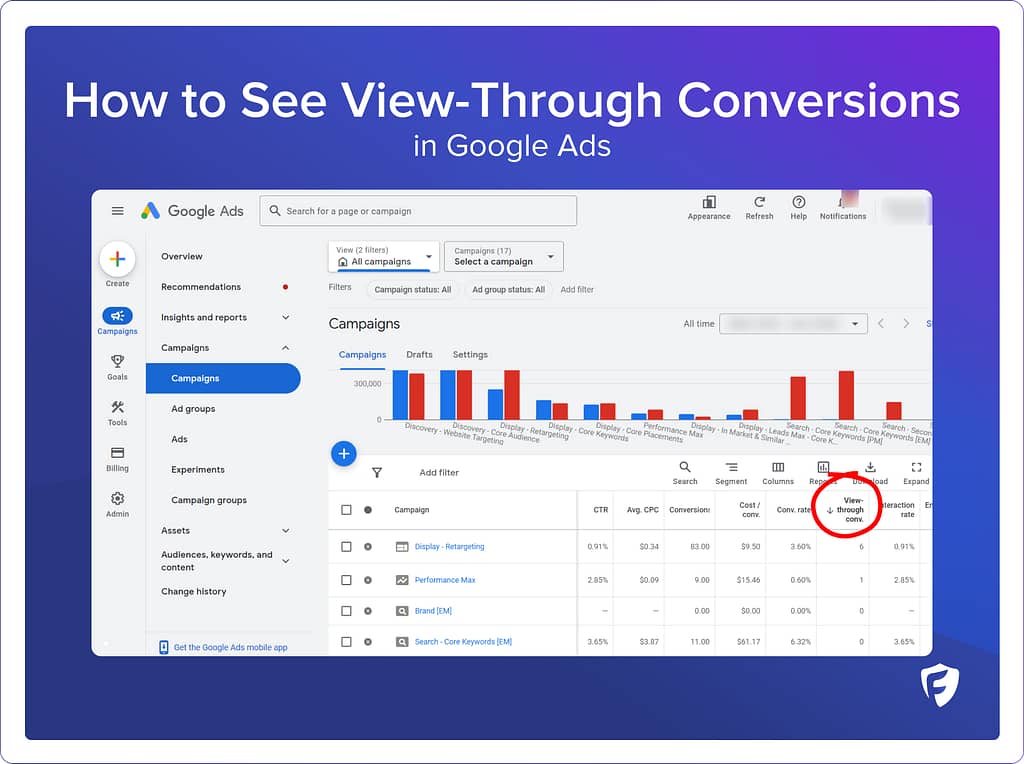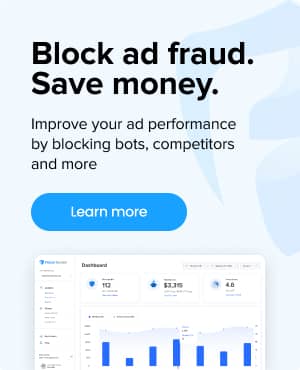What are view-through conversions?
View-Through Conversions track how often a user sees an ad, but doesn’t immediately click on it, then later engages with the brand or makes a purchase.
This metric is crucial for understanding the full scope of your ad’s influence and is often an important, but overlooked metric.
How view-through conversions work?
A view-through conversion occurs when a user is exposed to an ad but does not click, and later visits the advertiser’s site or performs a desirable action (like filling out a lead form or purchasing a product). This metric primarily applies to ads on Google Display Network and YouTube, leveraging cookies to track user interactions
In Google Ads and many other ad networks, the user can specify the time the conversion can occur after the user is exposed to the ad, usually within 30 days.
Why do view-through conversions matter?
View-through conversions are instrumental in measuring the true effectiveness of your campaigns, especially those focused on brand awareness or top-of-the-funnel engagement.
They provide a broader picture of how ad exposure influences consumer behavior over time, beyond immediate clicks. Recognizing the value of view-through conversions can lead to more informed budget allocation and strategy adjustments in your marketing efforts.
Challenges in measuring view-through conversions
While view-through conversions are valuable to view the effectiveness of your campaigns, they also present measurement challenges.
The trigger for a user to complete a conversion may be unrelated to your online display ad, such as an email you sent or a social media post, but Google Ads will automatically attribute your ad as a view-through since you ad was seen at some point during the user’s journey. These varying trigger reasons are especially far-reaching in today’s multi-device environments.
Therefore other attribution data should be referenced before making a final decision such as first- or last-click attribution models.
3 Examples of view-through conversions
1. Display Ad Exposure Leading to a Website Visit
A user sees a display ad for a new smartphone but doesn’t click on it immediately. Days later, recalling the ad, they visit the smartphone’s website and make a purchase. This is a classic example of a VTC.
2. Video Ad Influence on In-Store Purchases
Consider a user who watches a video ad for a clothing brand on YouTube. While they don’t click on the ad, they visit the brand’s physical store the following week and buy clothes. This offline conversion, influenced by the ad, is also a form of VTC.
3. Remarketing Campaigns
A user is exposed to a remarketing ad for a travel agency but doesn’t click it. A week later, they think of planning a holiday, remember the ad, and book a trip through the agency’s website, resulting in a VTC.
How are view-through conversions different than click-through conversion?
A click-through conversion occurs when a user clicks on an ad and takes a desired action immediately. In contrast, a VTC occurs when a user sees an ad, does not click on it, but later completes a desired action influenced by that ad.
How to see view-through conversions in Google Ads
In your Google Ads account, select the Campaigns icon in the left nav bar.
- Select Campaigns > then Campaigns again.
- In the reports area, select Columns > Modify Columns
- Add View-Throughs in the Conversions drop down.
- Select Apply
View-through conversions are now listed in your reports area (scroll to the right if needed).
Frequently asked questions
What should I set my view-through time window to be?
Google Ads typically uses a default window of 30 days, but this can be adjusted based on your time preferences and campaign objectives.
A shorter time window, such as a couple days, would indicate that the view-through window was more directly correlated to conversion and the user was less influenced by other promotions/channels.
Can view-through conversions be tracked for all types of ads?
View-through conversion are primarily applicable to display and video ads, particularly those are served through the Google Display Network and YouTube.





